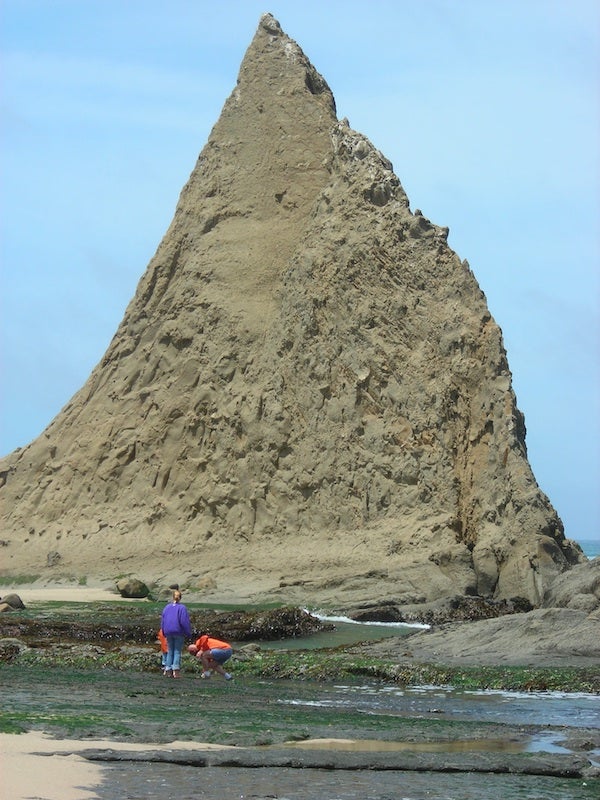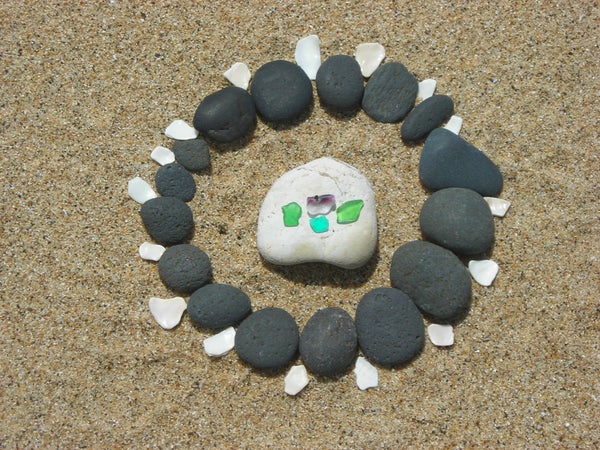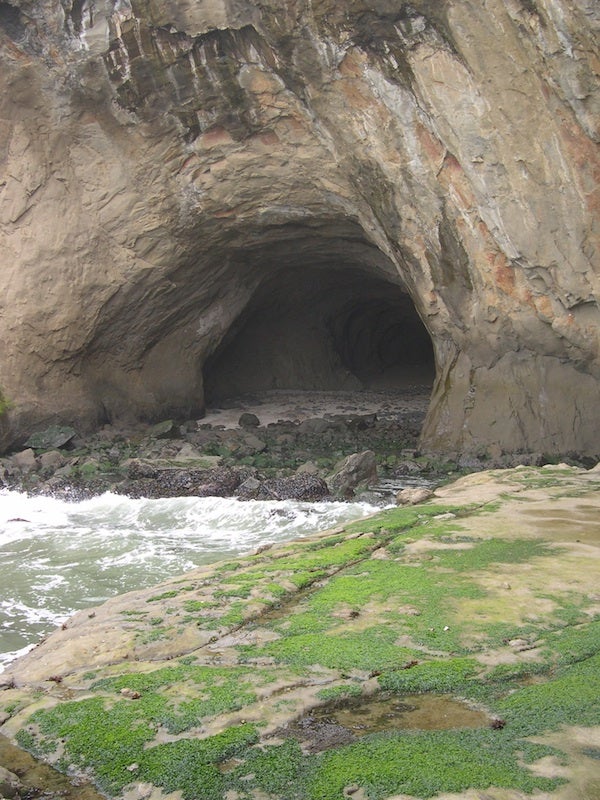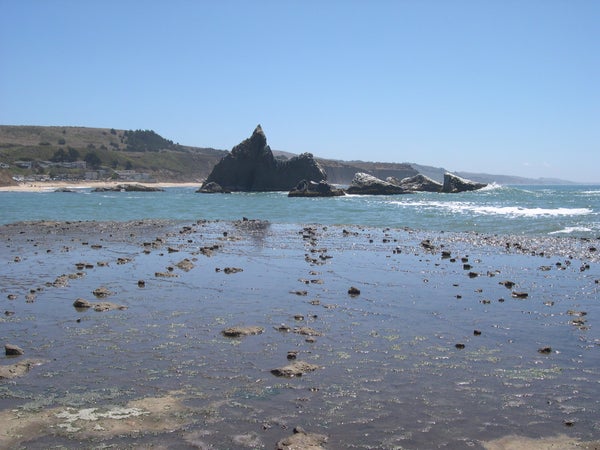This article was published in Scientific American’s former blog network and reflects the views of the author, not necessarily those of Scientific American
When my son Nick was young, we often went to a place called Martins Beach. It was an epic playground for a child—an amphitheater of steep sandstone cliffs facing the Pacific Ocean. Sitting on the beach in this armchair of rock, we watched an unscripted play of sea and sky. We listened to the waves knocking on the door of the Northern Californian shore, fiercely and insistently. And on calm days, tapping softly.
The cast of the play was never the same: Brown pelicans flying in tight formation, off on an unknown mission, skimming just over breaking wave crests. Curious seals watching us from the surf zone. Seagulls with bright yellow-orange beaks, searching for anything that looked edible. Surfers in an endless quest for the perfect ride. Nuns in black-and-white habits, their serious religious attire incongruously paired with the less serious pleasure of scrambling over rocks. Fishermen in waders, line-dancing forward and backward in the surf. Families on a Sunday break from the maddening crush of the city, enjoying a picnic before the return to Monday morning responsibilities.
If the tide was low, Nick and I waded out to a pyramidal pinnacle we had named “Shark Fin Tower.” Even in summer, the Pacific was frigid. Our feet were blue by the time we reached the tower and began exploring its tide pools. Each pool was a strange little world within a world, a riot of color and form. Bright, tentacled anemones, indigo-colored crabs in dark cracks, sandpaper-rough starfish, and shell-encrusted, wave-beaten rock. For a brief time, we were both children, sharing the common joy of exploration and discovery.
On supporting science journalism
If you're enjoying this article, consider supporting our award-winning journalism by subscribing. By purchasing a subscription you are helping to ensure the future of impactful stories about the discoveries and ideas shaping our world today.

"Shark Fin Tower" up close. Credit: Benjamin Santer
Perhaps our favorite beach activity was to make patterns in the sand. We tried to emulate the art of Andy Goldsworthy. We used the natural materials at our disposal—shells, stones, beach-glass, driftwood and seaweed—to create sculptures of fish, faces and dinosaur skeletons. The beach glass served as eyes, the seaweed as hair, the white stones as bones. Sometimes we made geometrical patterns in the sand, encoding pattern information by alternating sequences of black and white stones in spirals and circles. Transient pattern art, existing only until the next high tide, but living on in memory and in a few old photographs.

Transient art in the tradition of Andy Goldsworthy. Credit: Benjamin Santer
A love of patterns is in my blood. My day job is to look for patterns of human influence on the climate system. That search has been part of my life for over three decades. The search never ends. There are always new patterns to unravel and new data sets to interrogate.
The patterns in climate records have been decoded by thousands of scientists around the world. Many devoted their careers to this task. Most engage in this work for the same joy of discovery that Nick and I experienced while exploring the tide pools of Shark Fin Tower.
The message in the climate data is clear. While the rich “noise” of natural variability is recognizable, noise alone cannot explain the warming of the Earth’s surface, oceans and lower atmosphere over the past 50 years. There is a human signal in the data. We see this signal in measurements over most of the electromagnetic spectrum. The signal patterns—geographically, seasonally, and in slices through the atmosphere and oceans—are different from the characteristic patterns of natural variability noise. The human-caused changes in our climate system are dramatic.
Martins Beach has also undergone dramatic change. In 2008, a Silicon Valley billionaire bought the access road and the surrounding land. For nearly a decade he attempted to restrict public access to the beach. Ultimately, he failed. As of 2018 the public can enjoy Martins Beach again. The courts ruled that even the rich and powerful do not own the Californian coastline.

Credit: Benjamin Santer
Nor do the rich and powerful own our climate system. They cannot continue down a pathway of “business as usual” fossil fuel burning and greenhouse gas emissions for their own political and financial gain. They cannot saddle present and future generations with unacceptable levels of climate risk. The world is not their personal disposable asset.
As the Martins Beach case showed, legal accountability can be a slow and painful process. But in the end, no one is above the law. For those culpable in disruption of our planet’s climate, the tide has turned. Their power and influence is at its ebb, slowly disappearing into the sand. It’s time for a new high tide to scour the beach, removing the accumulated flotsam and jetsam of ignorance.
